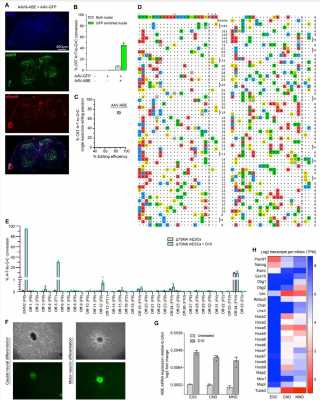
A team of medical researchers affiliated with a host of institutions in the U.S. has used base editing to restore the natural production of the SMN protein in mice, effectively curing spinal muscular atrophy (SMA) in the rodents. In their paper published in the journal Science, the group describes their base editing approach and its performance in restoring natural SMN production in mice afflicted with SMA.
SMA is one of the leading causes of infant mortality in humans. Babies born with the condition have a mutation in the SMN1 gene, resulting in production of insufficient amounts of the protein SMN, leading to neural deterioration and death. Many babies born with the condition who are diagnosed early enough are given drugs to increase production of SMN artificially, which slows progression of the disease, but cannot stop it completely. Thus, other therapies are needed.
In this new effort, the researchers used base editing, a kind of gene editing that is done chemically, to treat the disease in mice. Base editing is typically used to make single-nucleotide changes in a genome, as was done in this case.
In this particular instance, the change was made to the SMN2 gene, which normally partially encodes for production of SMN—the changes the team made fully activated the gene, allowing for more production of SMN. The SMN2 gene is related to the SMN1 gene, but there is an important difference: SMN2 has a C6>T mutation that makes it unable to regulate SMN protein production. Altering the mutation in a way that made it identical to the unmutated SMN1 gene removed this restriction, allowing the gene to encode for unlimited amounts of SMN.
Close monitoring of the altered mice showed the base editing restored production of SMN to normal levels, preventing neural degeneration. They also found that in cases where degeneration had already occurred, base editing led to regeneration and improved motor function. They also found that editing the mice’s genes increased lifespan from an average of just 17 days (for a control group) to more than 100 days.
More information:
Mandana Arbab et al, Base editing rescue of spinal muscular atrophy in cells and in mice, Science (2023). DOI: 10.1126/science.adg6518
Journal information:
Science
Source: Read Full Article
